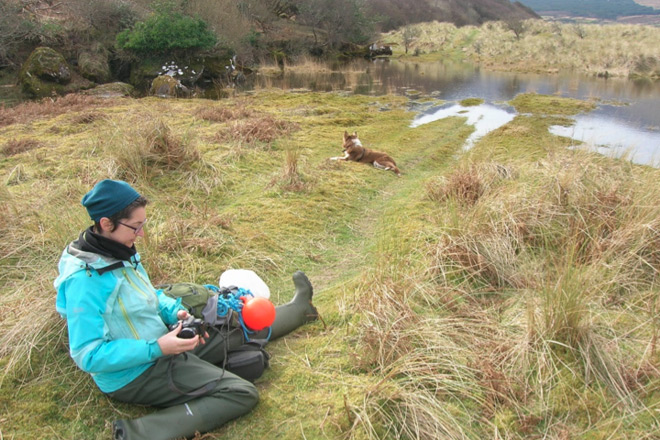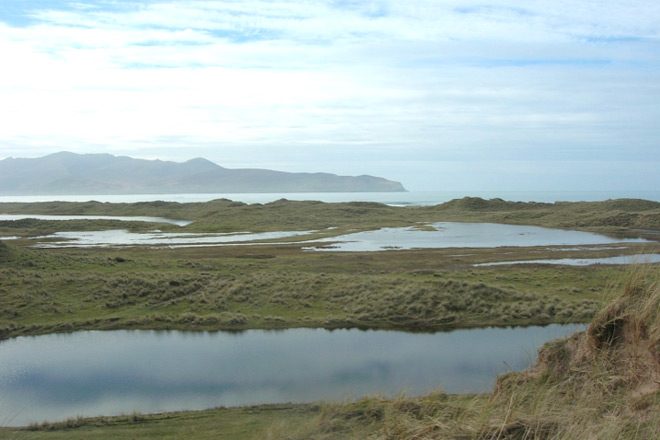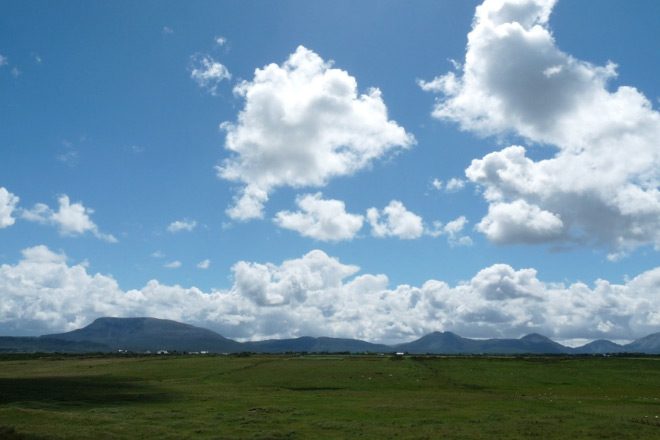

This just in: Snails flout convention and conservation theory falters in the field…

October 6, 2015
Questions, questions, questions – when you start a PhD that is all you have. Slowly, you pick the questions that are most interesting, find a method to address them, get some cash together to do the work and gather your data. Finally, you have a body of data to analyse – for me, all my work over the last two years have led up to this moment, and it is really exciting!
My questions were about the way we monitor habitats in Europe, and whether we really understand the condition that our most natural habitats are in. Most of the time we look at plant species, and this works quite well for dry land. The dune slacks where I work are complicated though, because they can flood for months at a time. I wanted to find out whether recording plants in the dry season could tell you about what lives in the slacks in the wet season. I decided to compare the communities of plants in dune slacks with the snails that live there, too.
My first surprise was when I looked at the diversity of species of plants and snails. I thought that where you get lots of different plants you would also get lots of different snails, but that does not seem to be the case at all. In fact, sites with high plant diversity could have many, hardly any, or a medium number of snail species, and the same could be said for sites with low plant diversity. In short, there was no pattern.
So maybe it isn’t a numbers game. I decided to do a typical habitat assessment on the basis of plants, just like a commercial ecologist would do. Sites with lots of natural species, a mixture of short and long grass and plenty of flowers passed the assessment. Sites which failed the assessment were over grown or over grazed, had very few natural species and contained lots of farm weeds. But when I looked at my snails, I couldn’t find any difference in the type of snails that lived in the sites which passed and failed the habitat assessment.
This leaves me a bit confused. Snails depend on living and dead plants for most of their food. If the type of plants or the structure of vegetation in dune slacks doesn’t have an impact on snails, what is going on?
Well, there are plenty of possible explanations. For one thing, snails are notoriously slow. Even though dune slacks may be suitable for a large number of species in Ireland, only a small number of species might actually find any one slack. If this is the main reason for the pattern, it means that the number and variety of species I find in a dune slack are basically governed by chance.

Alternatively, it could be down to the environment, and this is where the water comes in. The plants that are typical of dune slacks need lots of water around their roots – but they don’t require flooding above the ground. Aquatic snails are only active when there is open water, however, so they need the dune slacks to stay flooded for a few months. If the slacks don’t flood, the snails can’t breed and eventually they will die out. So, I could have two dune slacks that look very alike, but one could contain only land snails while the other could contain aquatic snails, depending on how long the sites flood for and how high the water is.
It is all a bit unnerving. We thought that if there were plenty of natural plants in a dune slack, surely it was still acting as a natural habitat and a home for other creatures. We used plants as a proxy because we simply cannot survey all of the microbes, plants and animals in every habitat – there is not enough time or money to do it. Now we find that by assessing only one group of species, we might fail to notice changes in the environment which affect other species.
At the end of the day, all this research is about making conservation work better. Once we know that the current method is not doing what we expected it to do, we can find ways to improve it. The first thing to do is to find out more. What exactly governs the distribution of snails? Do other species follow a similar pattern to snails or to plants? If we include snails in the monitoring assessment will that help to detect early signs of change in the habitat, or should we be measuring environmental factors like water quality directly?

So, my early results have left me with more questions. I am quite sure that the answers I get will lead to even more questions, because the more we learn, the more we realise what we don’t know. We are already discussing these results at conferences and journal articles will be published in the hopes of informing conservation policy worldwide. The results will not have much effect on the everyday life you or me, but if this project leads to a single change in the conservation assessment of a single habitat in Europe, and that leads to more species surviving in a landscape dominated by humans, for the denizens of dune slacks, it could mean the world.

06/10/2015
You might also be interested in...
Van Walt Guidelines for sampling for PFAS in Groundwater
November 13, 2024We need to make clear, that at the time of writing, there are no ISO or EN standards which deal with the sampling of groundwater for PFAS.
Read MoreSpot measurement v. continuous environmental monitoring
August 25, 2023Environmental monitoring has developed considerably over the years. From the time when a consultant went out monthly or quarterly with a dip tape to monitor the groundwater level in a borehole, wind forward...
Read MoreMeasuring Nitrates (NO3, NO3-N) in the field
June 20, 2023The interest in Nitrates is nothing new. One way or another we have been measuring them for half a century.
Read MoreVan Walt Environmental Equipment
A small selection of our environmental equipment